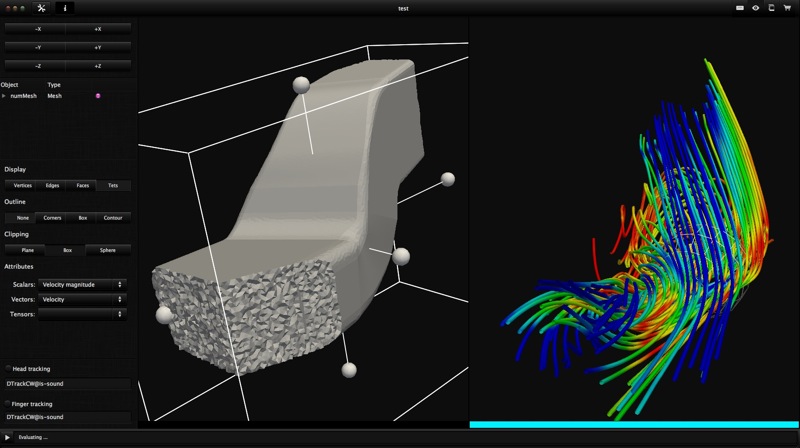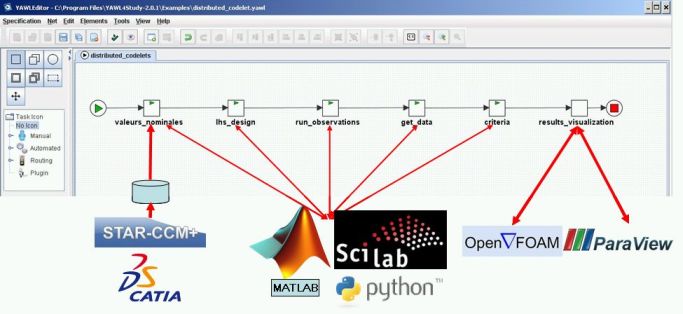Simulation platform NUM3SIS
NUM3SIS is a multidisciplinary simulation platform developed jointly by Opale, Nachos and Tosca teams and used for prototyping numerical methods. It is based on modern software engineering techniques, such as visual programming or plugin system to facilitate and speed up developments.
More details can be found at NUM3SIS web site
It contains presently plugins for the following fields:
- Compressible flows (Reynolds-averaged Navier-Stokes equations)
- Electromagnetics (space-time Maxwell equations)
- Pedestrian and automotive traffic flows (macroscopic continuous models)
Optimization platform FAMOSA
FAMOSA is an optimization platform developed by Opale team. It contains the following toolboxes :
- Single-objective optimization algorithms
- Steepest-descent method with approximated line search (minimization of smooth unimodal functions)
- Conjugate-Gradient method with approximated line search (minimization of smooth unimodal functions)
- Quasi-Newton method including BFGS update with approximated line search (minimization of smooth unimodal functions)
- Torczon’s multi-directional search algorithm (minimization of noisy unimodal functions)
- (λ,μ) – Evolution Strategy (minimization of multimodal functions)
- Covariance Matrix Adaption Evolution Strategy CMA-ES (minimization of multimodal functions)
- Kriging-based optimization EGO method (minimization of multimodal smooth functions)
- Multi-objective optimization algorithms
- Pareto-Archived Evolution Strategy
- Multi-Gradient Descent Algorithm
- Sampling techniques
- Latin Hypercube distribution
- Factorial distribution
-
Game strategies
- Symetric two-player Nash game
Distributed workflow platform
- Workflow specification with high-level graphic editor
- Formal syntactic and semantic workflow checking
- Composite hierarchical workflows
- Dataflow and control flow approaches
- Standardized interface for external code invocations
- Standard scripting, Web Services and high-level monitoring interfaces
- Parallel, loop and conditional branchings
- Fault-tolerance and resilience capabilities
- Exception handling and constraint modeling
- Distributed and parallel computing based on the GRID5000 infrastructure
- Workflow based on the YAWL workflow management system




